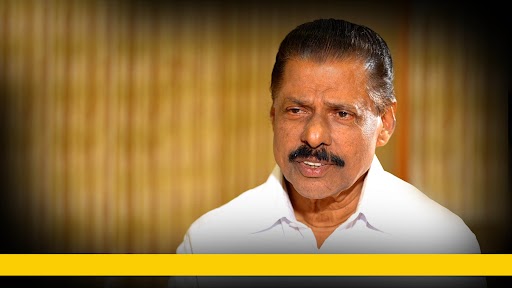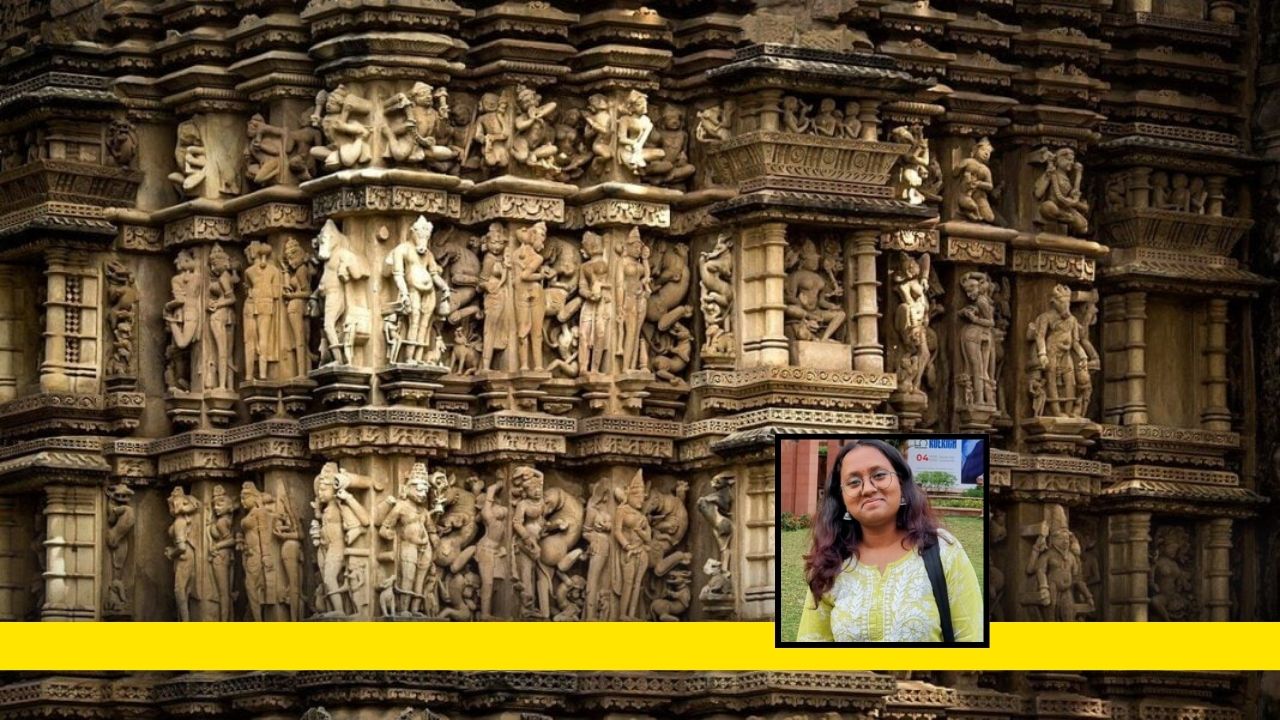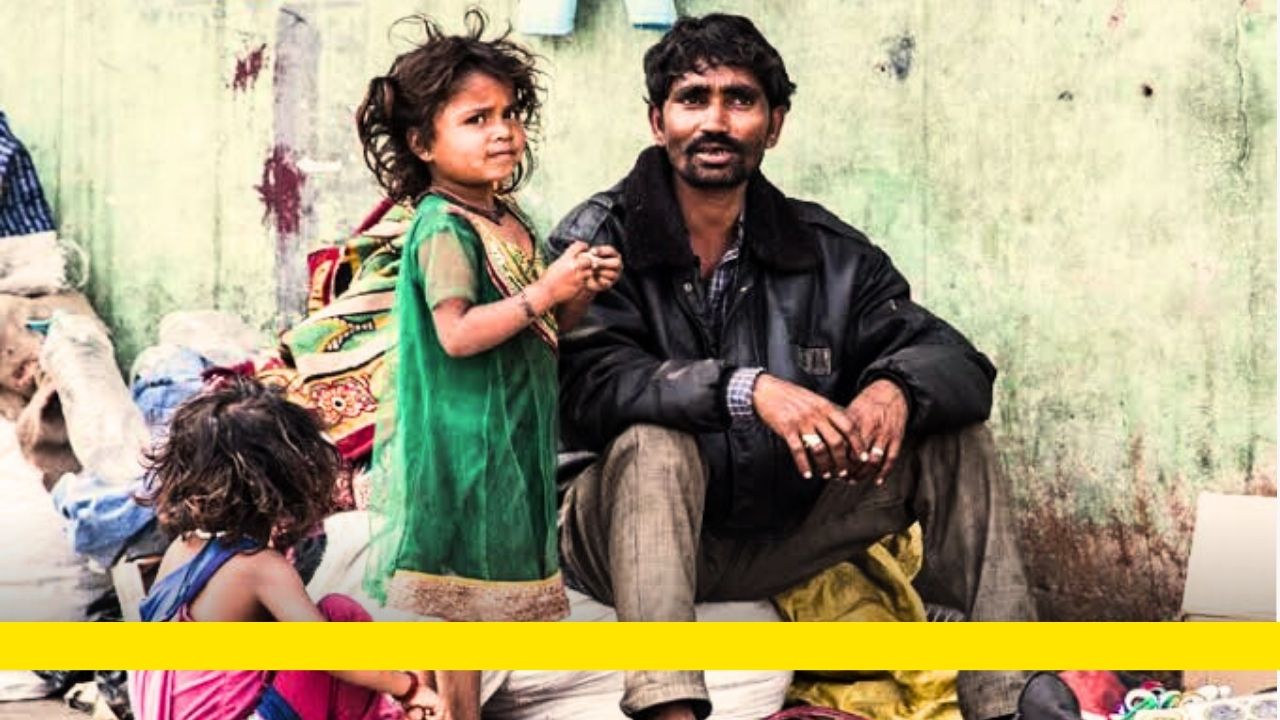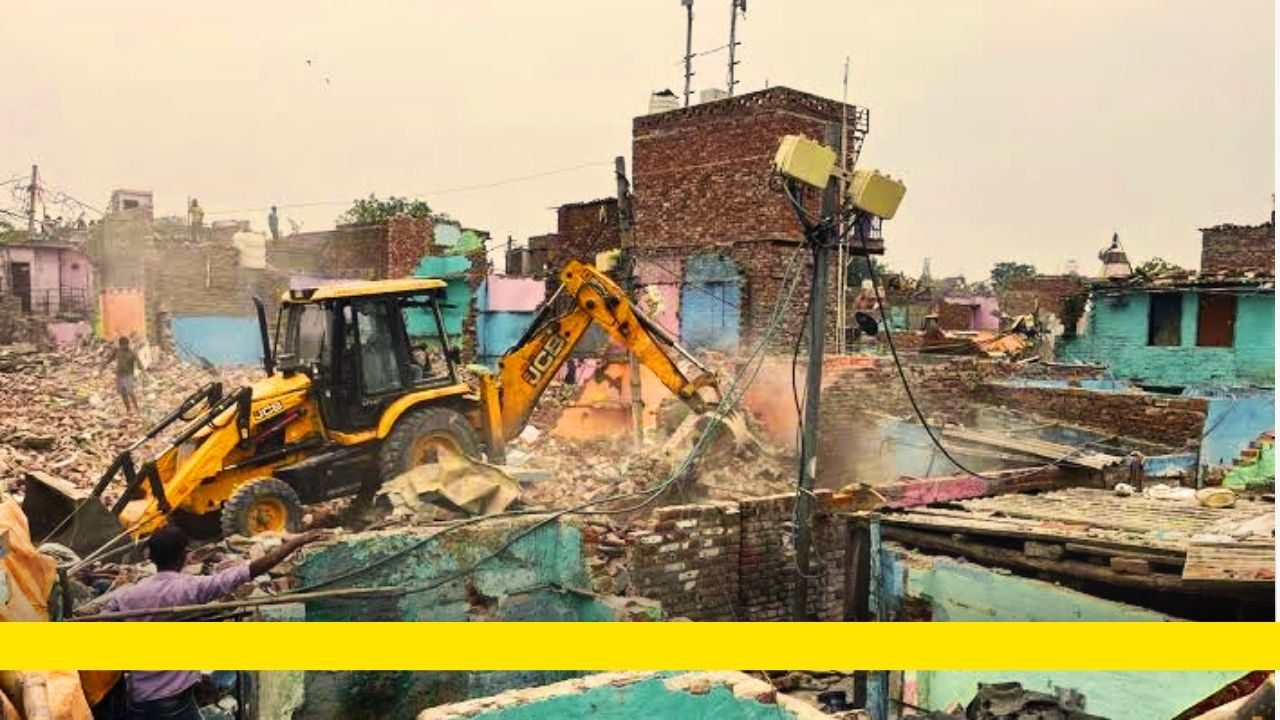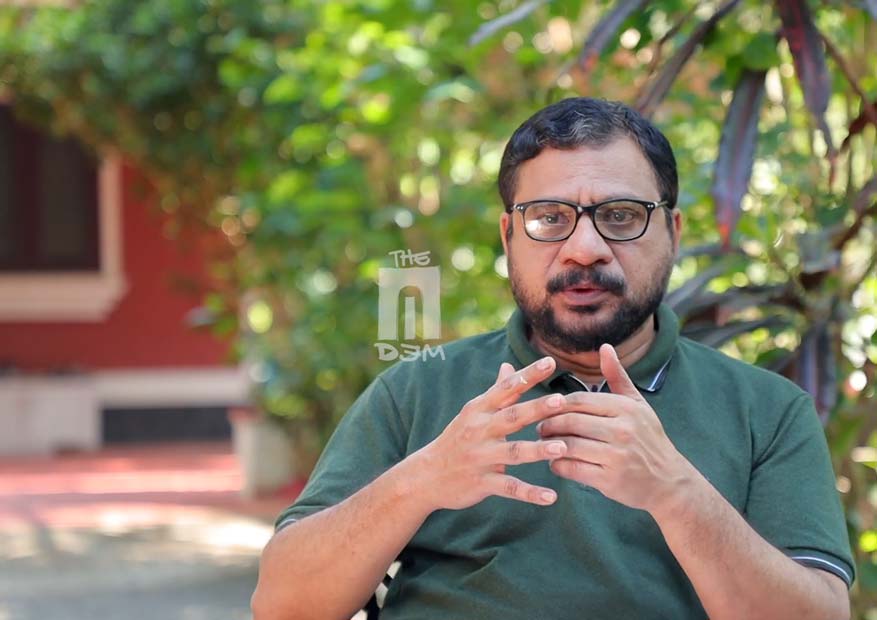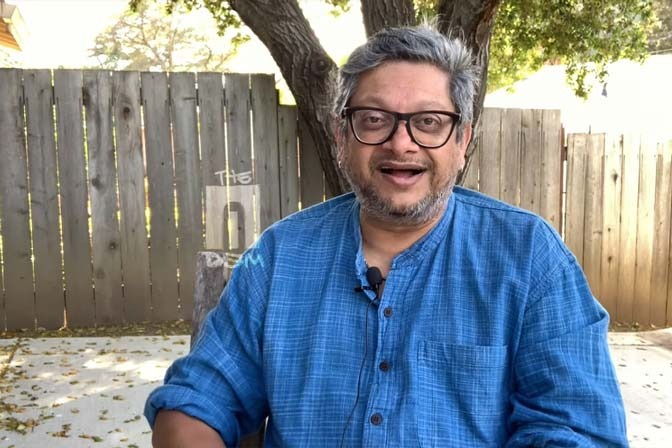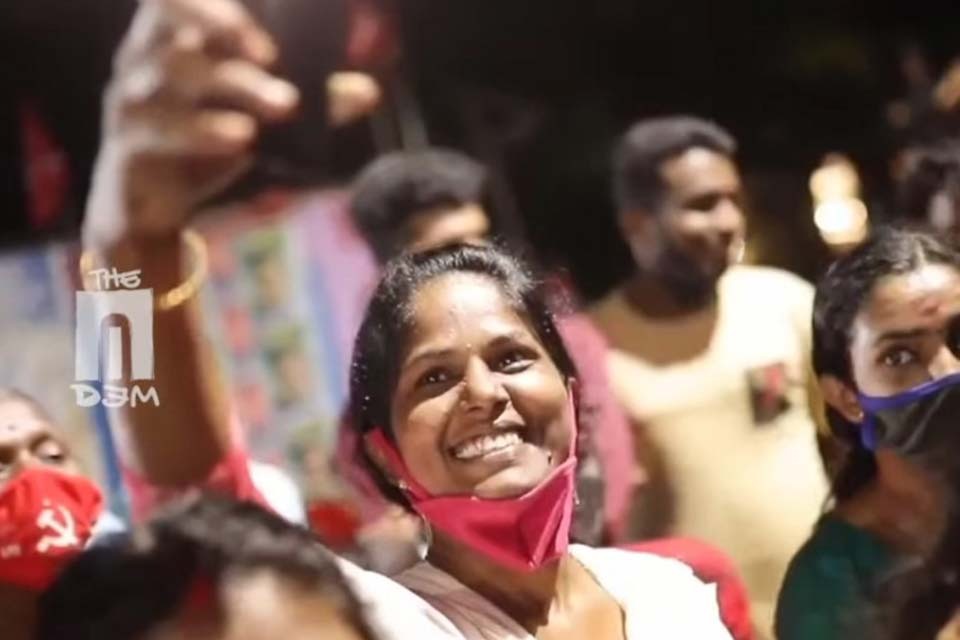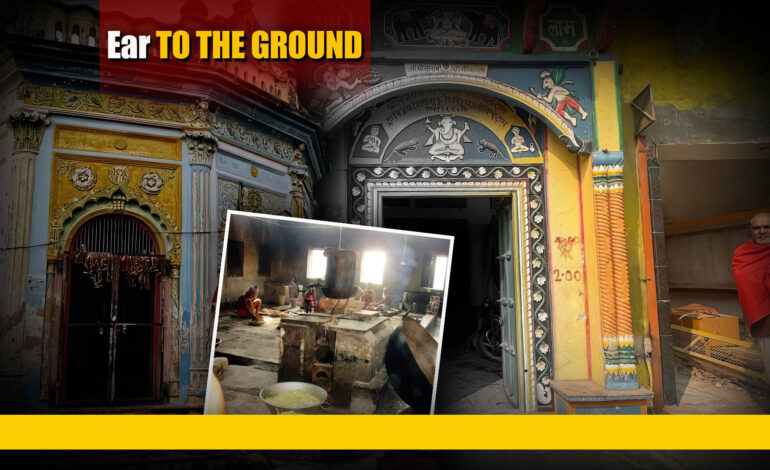
This is the third and final part of “EAR TO THE GROUND”, from Ayodhya. The “EAR TO THE GROUND” is a unique series from The AIDEM presenting offbeat ground-level reports that go beyond the mainstream media. This three-part ground report has its focus on the ongoing developments in the temple town, including the rampant destruction of buildings, temples as well as other places of worship in the name of building a Ram Corridor in the same pattern as the Varanasi Vishwanath corridor.
The author of this series is Shivam Mishra, writer, and documentary film-maker, who points out that what the area is witnessing now is not renovation and rejuvenation but blatant destruction of the “sacred geography“ of Ayodhya. An ardent believer in Lord Rama, Shivam Mishra had spent several days in Ayodhya, researching, collecting, and documenting data.
A Plan without a plan
To understand the situation in greater detail from a legal point of view, I contacted advocate Tarun Jeet Verma. While I walked my way to his place, I stopped at the post office building. Unlike a typical post, it did not have a boring look. A majestic double-storied stone structure, it had several chambers with stone ‘chaukhats’ bearing images. A man with a drilling machine was making a herculean effort to get his first breakthrough. On the opposite side of the road, laborers were trying hard to break one stone at a time.
I pondered why on earth the Indian state wants to demolish such a beautiful piece of art. Why can’t they just renovate and utilize it for commercial purposes?
Nevertheless, I met the advocate, a lively middle-aged man who knew every detail and anecdote about the Ram Janmabhoomi at the back of his hand. He belonged to a generation of lawyers who represented the Nirmohi Akhada’s claim on the Janmasthan since the British days.
Tarun explained the legal modus operandi of any government in India when they undertake such a large-scale makeover. First, a detailed project report (DPR) complete blueprint of the plan is prepared. The report is then published in the government’s gazette. Some time is then provided for citizens to make suggestions or appeals. Here, no such procedure was followed. Just a signature of the original owner on the ‘sahmati patra’ (Certificate of Acceptance), and off goes the structure. And the financial and other transactions and deals behind it remain wrapped in mystery.
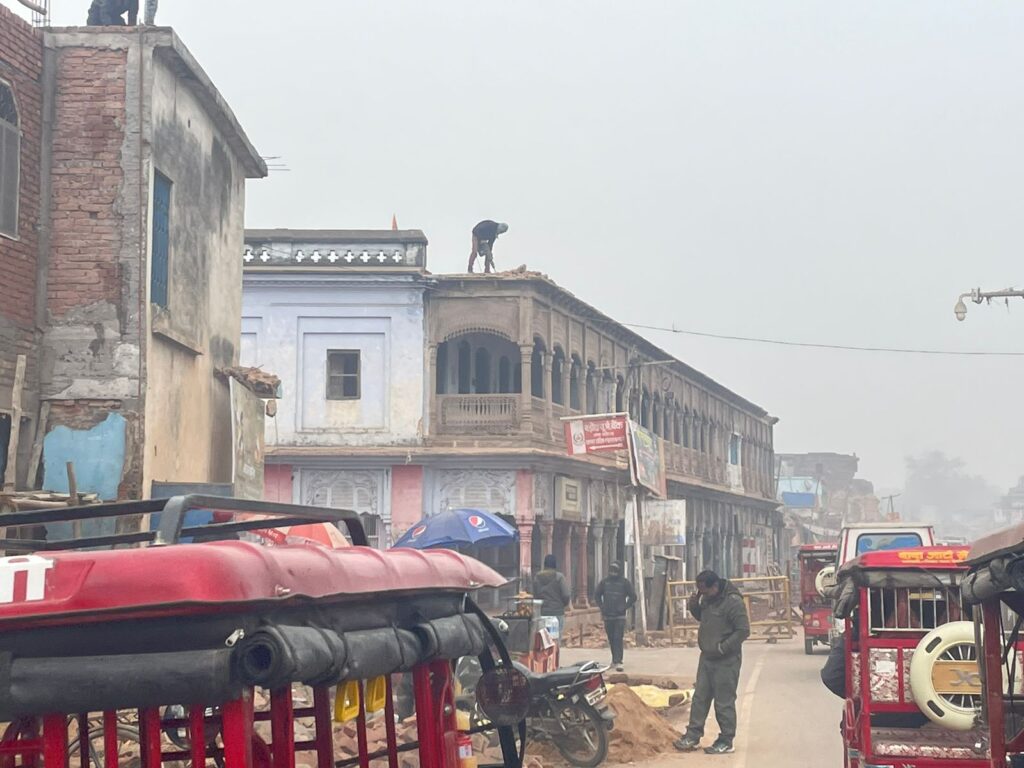
The initial plan was to increase the width of the road to 10 meters; then it was abruptly increased to 24 meters in some places. And officials are always equipped with an ‘official’ response to such ad hoc measures: upar se order hain (There are orders from above). After interacting with many officials, Tarun has come to the conclusion that the only plan in Ayodhya is ‘no plan’. “Even if there is any plan, it has been kept as a top secret somewhere in Delhi,” he said.
Right now, as per his information, there will be six bus stops for electric buses in the old city and the government wants the city to be ready before the 2024 election. To meet this deadline, officials have been given absolute power, and the whole state apparatus is working ‘overtime’, literally, even after office hours. Tarun told me that in the dead of the night the street light would miraculously go off. Then strong blows of the rock bucket of the earth movers would tear down not only the walls but also the morale of the people to resist.
What about corruption? Corruption and cuts are by-products of any large-scale project. Tarun shared a lot of amusing instances of money being funneled to the executives of the state apparatus. One shopkeeper received just 10 percent of the amount allocated as compensation and the rest was guzzled by the state officials.
Without a doubt, traders and citizens are angry over the insensitive administration, and the ruling Bharatiya Janata Party may feel the heat in the local municipal elections. It is widely believed that the U.P. government has strategically delayed the election. The stated reason for the delay is the party’s commitment to ensure ‘social justice’ for the OBCs in the elections. After the Allahabad High Court has quashed the proposal for OBC reservation, the State government has decided to appeal to the Supreme Court. Thus, the State government has bought time to complete the demolition process and clear the files.
A Raw deal for Nirmohi Akhada
The series of developments hold no value to Tarun as he had already been disenchanted with the state from the day the Ram Janmabhoomi verdict was delivered. Tarun claims the then Chief Justice of India, Ranjan Gogoi accepted the ‘sevaiti’ (service) rights of the Nirmohi Akhada which had filed the title suit for the Rama Janmabhoomi as far back as 1858. But, in the final Judgment, the entire ownership went to Sri Ram Janmabhoomi Teerth Kshetra and Nirmohi Akhada was consoled with an ambiguous ‘appropriate role’ in the trust.
I was pretty curious to know about the fate of ‘Sita Rasoi’. to my utter dismay I found out that it was indeed destroyed in 2020. In the early part of the 2000s, a series of bomb blasts rocked the city of Ayodhya. Sita Rasoi was one of its targets. Although the terrorist failed to blow it up, the state itself completed the process.
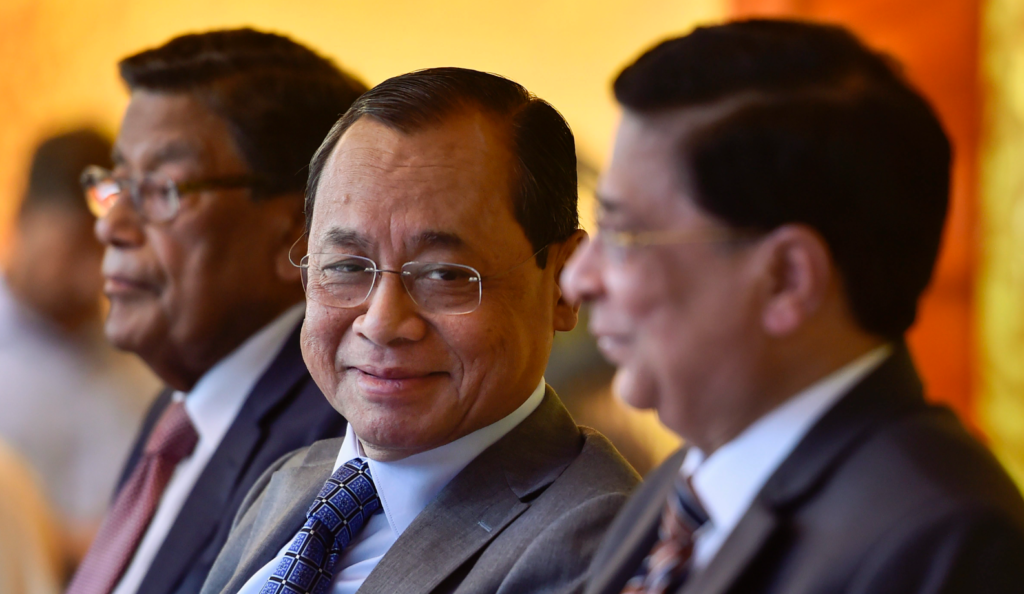
There were 13 temples around the Ram Janmabhoomi. Eleven of those belonged to the Nirmohi Akhada. Since the acquisition of the 1990s, one or the other temple has gone missing. Tarun quipped that he was able to get a stay order against the demolition of ‘Fakeer-e-Ram’ Mandir. The name ‘Fakeer-e-Ram’ rang in my ear, as I learned in Kashi that Swami Avimukteshwaranand had filed a case to stop the razing of the temple which apparently stood on the spot where Sri Ram was believed to have changed his royal attire before leaving for his Vanvas. Another temple that the state wanted to demolish was the Ram Gulela Mandir but it had to backtrack because of Tarun’s legal intervention. The way things have progressed so far, it appears that the state had some grudge against every sacred structure around the Ram Janmabhoomi because the roads had been designed in such a way that demolition was the only option before it. Rumors are also strong that the state is planning yet another corridor for the Nageshwar Nath Temple. As per sacred texts, written and oral, Nageshwar Nath Mahadev was consecrated by Sri Rama’s son Kush. These texts have it that Ayodhya was abandoned in Kaliyuga and, as a consequence, it was covered with dense forest. King Vikramaditya rediscovered and rebuilt the entire city by recognizing the ‘Nageshwar Nath’.
I entered a different zone of space and time as I sauntered along the lanes around the Nageshwar Nath Mandir. It is one of the most beautiful temples of Ayodhya; its outer walls have intricate floral patterns with idols of rishis. The ornate pillars are adorned with sculptures of apsaras. The lane on the right side of the temple has two temples _ Gore Ram Mandir and Kale Ram Mandir _ facing each other. The Kale Ram Mandir houses the idol of Sri Rama, which ‘appeared’ on the fateful night of December 22, 1949.
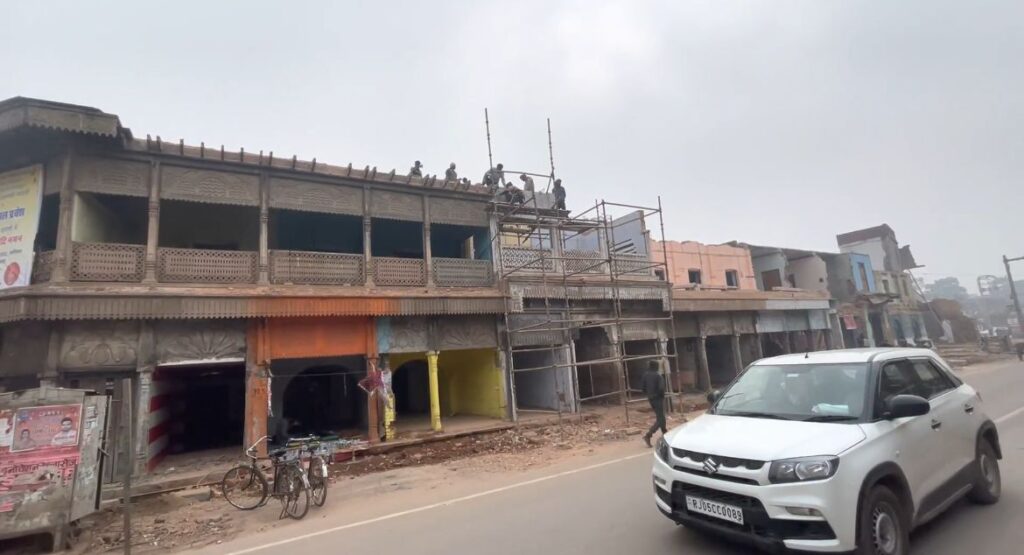
European cities meticulously preserve every single brick of the buildings in their old cities. Switzerland even rents out ‘medieval’ huts in the mountains. But here, at Ram Ki Paidi a centuries-old bhawan built by kings of yore lies in extreme neglect. Garbage is littered around abandoned temples. Even an atheist government would call an army of archeologists, conservationists, or art historians to preserve every last brick. In my opinion, every abandoned temple should be reconsecrated and a pundit should be appointed to serve the deity. And Hindus around the world will be enthusiastic to fund such an initiative.
The Impact of ‘Corridor Culture’
Without a doubt, many heritage bhawans and temples in Ayodhya are in a sorry state, but I have regard for the caretaker or the owner of a heritage temple who uses the property to rent out shops at least. He does not indulge in wanton destruction or displace the deity for commercial gains. It is impossible to fathom the idea behind the ‘corridor’ culture. Who would believe that a few temples of historical importance in the Kashi corridor were demolished just for the easy flow of VIP cars?
The officials of the state will not fix problems such as overflowing sewage, and repair or renovate old buildings, they would not manage crowds efficiently or get the river or kund (the pond) cleaned. But one fine day they would shove the idea of a grand corridor down the throat of the masses.
The idea of laying broad pathways, offering VIP darshans, and building luxury suites near sacred shrines is a blatant McDonaldisation of the teerth. Just like the burger eating experience in McDonalds is uniform across India, one does not expect surprises in its taste. But Hindu teerthas are not hotel chain. Every Hindu teerth has a specific deity, a shastra, rituals and history, and a local population patronizing it. Commercial tourism and ‘drive-thru’ darshan are sought to be promoted at the expense of core values.
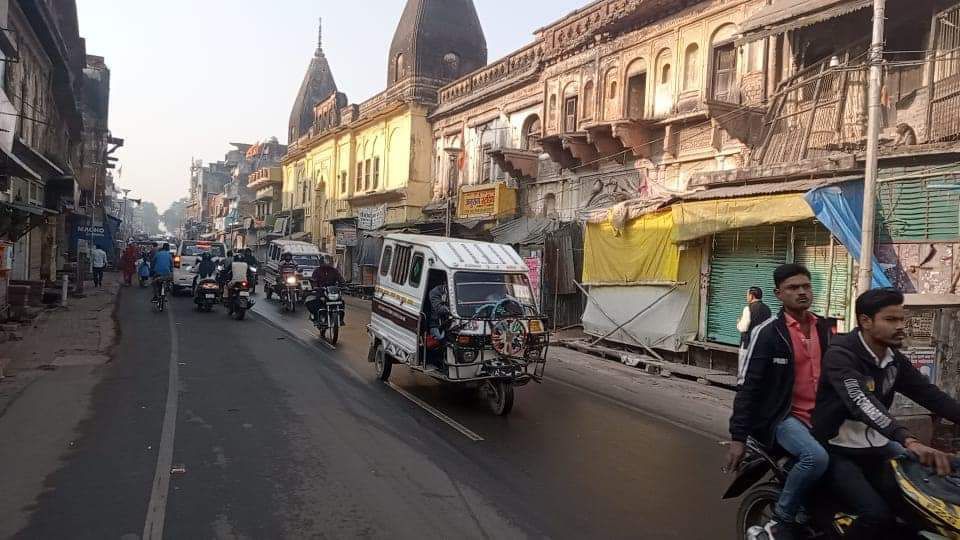
The way Ayodhya and its residents are being treated is light years away from the ideals of Sri Rama, who set the parameters of ‘Maryada Purushottam’, the best among men. What should be said about the kingdom of Sri Rama? It’s not that itihasa-puranas do not have examples of prosperous kingdoms. Veda Vyas narrates that Sivodas’ rule over Kashi was so great that even devas were unable to find fault with it. But nothing comes close to Ram Rajya. Goswami Tulsidasa gives a profound description of “Ram Rajya”.
राम राज बैठे त्रैलोका। हरषित भए गए सब सोका।।
बयरु न कर काहू सन कोई। राम प्रताप विषमता खोई।।
दैहिक दैविक भौतिक तापा। राम राज नहिं काहुहि ब्यापा।।
अल्पमृत्यु नहिं कवनिउ पीरा। सब सुंदर सब बिरुज सरीरा।।
नहिं दरिद्र कोउ दुखी न दीना। नहिं कोउ अबुध न लच्छन हीना।।
सब गुनग्य पंडित सब ग्यानी। सब कृतग्य नहिं कपट सयानी।।
राम राज नभगेस सुनु सचराचर जग माहिं।
काल कर्म सुभाव गुन कृत दुख काहुहि नाहिं।।
“The Moment Rama sat on the throne; a wave of happiness spread through the kingdom. Fear and gloom vanished as if they never existed, and citizens were relieved of their physical or psychological pains. No one died prematurely, everyone enjoyed the best of their health. Citizens cultivated knowledge and excelled in their craft.”
But in modern-day Ayodhya, the Ayodhyawasi is living in fear and confusion _ their houses were bulldozed without a resettlement plan for them and for a few days their families languished in the open and survived on ‘langar’. Temples, mathas, and dharamshalas that were built by kings or great men are facing demolition for commercialization.
When nothing is transparent, one suspects that the state’s intent is malicious _ it never presents a Detailed Project Report (DPR), officials are reckless, and citizens are paralyzed with an uncertain future staring at them. What is the way out? A group of citizens led by Naveen Srivastava has written to the President of India, seeking permission to resort to euthanasia as they are fed up with the prevarication of the state.
What an irony! In Rama Rajya, no one was unhealthy but here, citizens are seeking permission to die to escape the state’s dereliction of duty. Generations to come may see grandiose hotels, eateries, and souvenir shops but when they stroll in the city to affirm their identity, they would find none. There would be a void left in their hearts that may not let them live peacefully. Loss of History is a loss of identity _ and hence loss of civilization.
Read earlier reports, Part 1 & Part 2
To watch the video story click here Hindi, English & Malayalam
Subscribe to our channels on YouTube & WhatsApp



